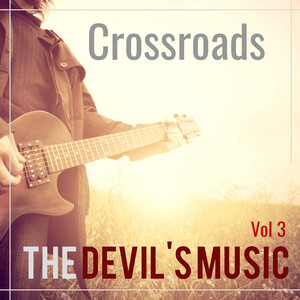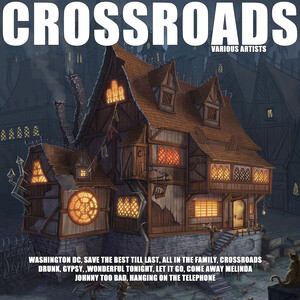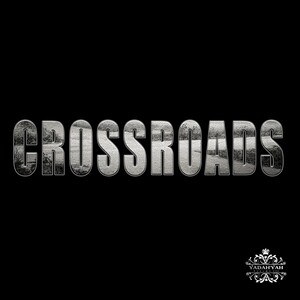
Other African origins of the crossroads in Hoodoo are found in West Africa among the Yoruba people. The 'turn' in the path,' i.e., the crossroads, remains an indelible concept in the Kongo-Atlantic world, as the point of intersection between the ancestors and the living." "It is at the crossroads where many Africans believe one will witness the powers of God and emerge from the waters spiritually renewed." The Yowa cross (Kongo cosmogram) "Is a fork in the road (or even a forked branch) can allude to this crucially important symbol of passage and communication between worlds. The Kongo cosmogram is also called the Bakongo cosmogram and the "Yowa" cross. Archeologists unearthed representations of the Kongo cosmogram on slave plantations in South Carolina on clay pots made by enslaved Africans. During the transatlantic slave trade, the Kongo cosmogram was brought to the United States by African slaves. The center of the crossroads is where the communication with spirits take place.

It represents the rising and setting of the sun, and the human life cycle of death and rebirth. In conjure, rootwork, and hoodoo, a form of African magical spirituality practiced by African Americans in the United States, the crossroads in Hoodoo originates from the Kongo cosmogram in Central Africa. In the 1885 historical essay Transylvanian Superstitions, Emily Gerard describes how crossroads were often avoided as a matter of course, and describes a Romanian belief that a demon could be summoned at a crossroad by drawing a magic circle, offering copper coin as payment, and reciting an incantation. Johann Fausten, describes the character Faust inscribing magic circles at a crossroads in order to summon the devil. In Western folk mythology, a crossroads can be used to summon a demon or devil in order to make a deal. While they became a place of burial for suicides and others unable to be given proper burial in the Middle Ages, the crossroads were once a burial place second only to the consecrated church for Christians. This ritual of crossroads burial dates back to Anglo-Saxon times and continued until being abolished in 1823. by gibbet or dule tree), which may have also been a reason for it being a site of suicidal burial as suicide was considered a crime. Crossroads were also commonly used as a place of criminal punishment and execution (e.g. This may have been due to the crossroads marking the boundaries of the settlement coupled with a desire to bury those outside of the law outside the settlement, or that the many roads would confuse the dead. In the UK there was a tradition of burying criminals and suicides at the crossroads. This false god was honored among the heathens in that day, and he is also called by the name Odin in the Danish manner." The heathens made him a renowned god for themselves at crossroads they offered sacrifices to him frequently and they often erringly brought praise-offerings to hilltops, all through the devil’s teaching. "There was also a man called Mercury, he was very crafty and deceitful in deed and trickeries, though his speech was fully plausible. gelætum him lac offrodon oft and gelome þurh deofles lare and to heagum 57. macedon þa hæðenan be heora getæle eac heom to mæran gode and æt wega 56.
#Deal at the crossroads song full
And, ðeah full snotorwyrde, swicol on dædum and on leasbregdum. Sum man eac wæs gehaten Mercurius on life, se wæs swyðe facenfull 54. Īn 11th-century homily called De Falsis Deis tells us that Mercury or Odin were honored on crossroads.ĥ3.

'Suppers of Hecate' were left for her at crossroads at each new moon, and one of her most common titles was 'goddess of the crossroads.' In her later three-fold depictions, each of the three heads or bodies is often associated with one of three crossing roads.

Though less central to Greek mythology than Hermes, Hecate's connection to crossroads was more cemented in ritual. The herm pillar associated with Hermes frequently marked these places due to the god's association with travelers and role as a guide. In Greek mythology, crossroads were associated with both Hermes and Hecate, with shrines and ceremonies for both taking place there.

It was used to mark boundaries and crossroads in ancient Greece, and thought to ward off evil. A herma was a statue associated with Hermes.


 0 kommentar(er)
0 kommentar(er)
